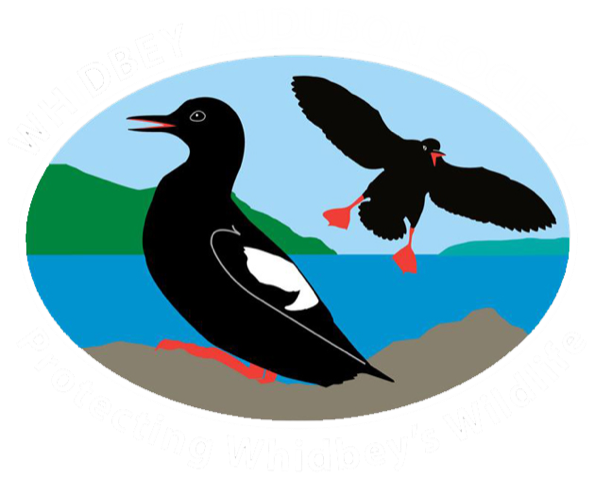“If one has lost one's berries, one is likely to lose one's robins too.”
― Sara Bonnett Stein, Noah's Garden: Restoring the Ecology of Our Own Backyards
Credit: Melissa J Will (Empress of Dirt, Ontario Canada)
Native Plant and Birdscaping Resources:
Whidbey Audubon is working with Whidbey Island Conservation District to encourage the use of native plants in landscaping and yards to provide food, shelter and habitat for our bird populations.
Using lists prepared by Washington Audubon, Whidbey Island Conservation District and many others we provide information about native plants that attract and provide habitat for insects, birds and wildlife.
Native plants that provide food for birds include red-flowering currant, Oregon grape, native Pacific crabapple, Indian plum, oceanspray, native blackberry, huckleberry, among many others. Salal, snowberry, willow and Nootka rose provide shelter. Most of these plants grow quickly, are drought-tolerant when established, can withstand wind and salt spray and can be acquired easily at native plant sales or by propagating them yourself. Native plants can stabilize steep slopes and have greater root depth and structure than most non-natives. The documents and websites below offer dozens of choices that can provide summer and winter color, interesting structure, low maintenance, encourage pollinators, discourage deer browsing, bring a wide variety of birds to your yard, and most importantly provide the “keystone plants” necessary to support the food web that supports birds. ‘Keystone plants’ are native plants critical to the food web and necessary for many wildlife species to complete their life cycle. Without keystone plants in the landscape, butterflies, native bees, and birds will not thrive. 96% of our terrestrial birds rely on insects supported by keystone plants.
Credit: Biodiversity Heritage Library
Whidbey Island Conservation District Native Plants
Washington Association of Conservation Districts - Planting Is For The Birds
Garden for Wildlife - Keystone Plants for Marine West Coast
Commercially Available Host Plant for Butterflies and Moths - Marine West Coast
National Audubon Plants for Birds
Audubon - Making Your Yard Bird Friendly Overview
Banner Photo: Carlos Andersen


